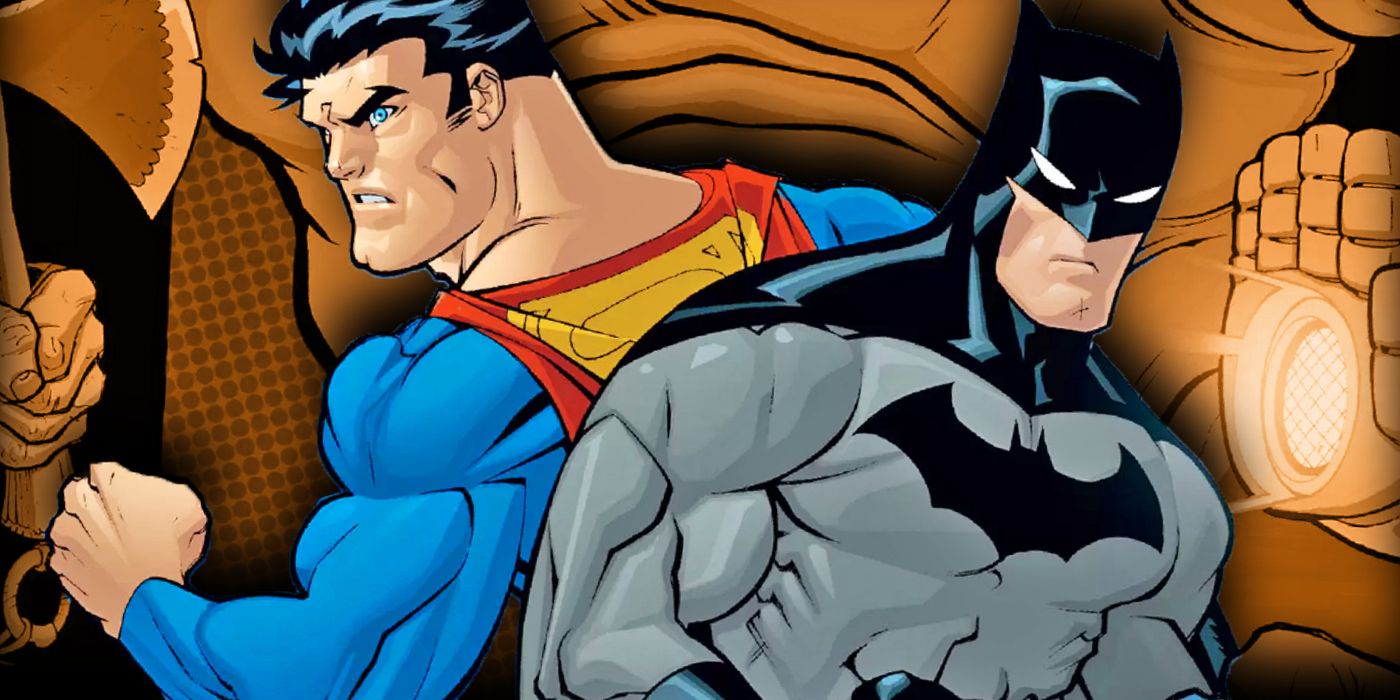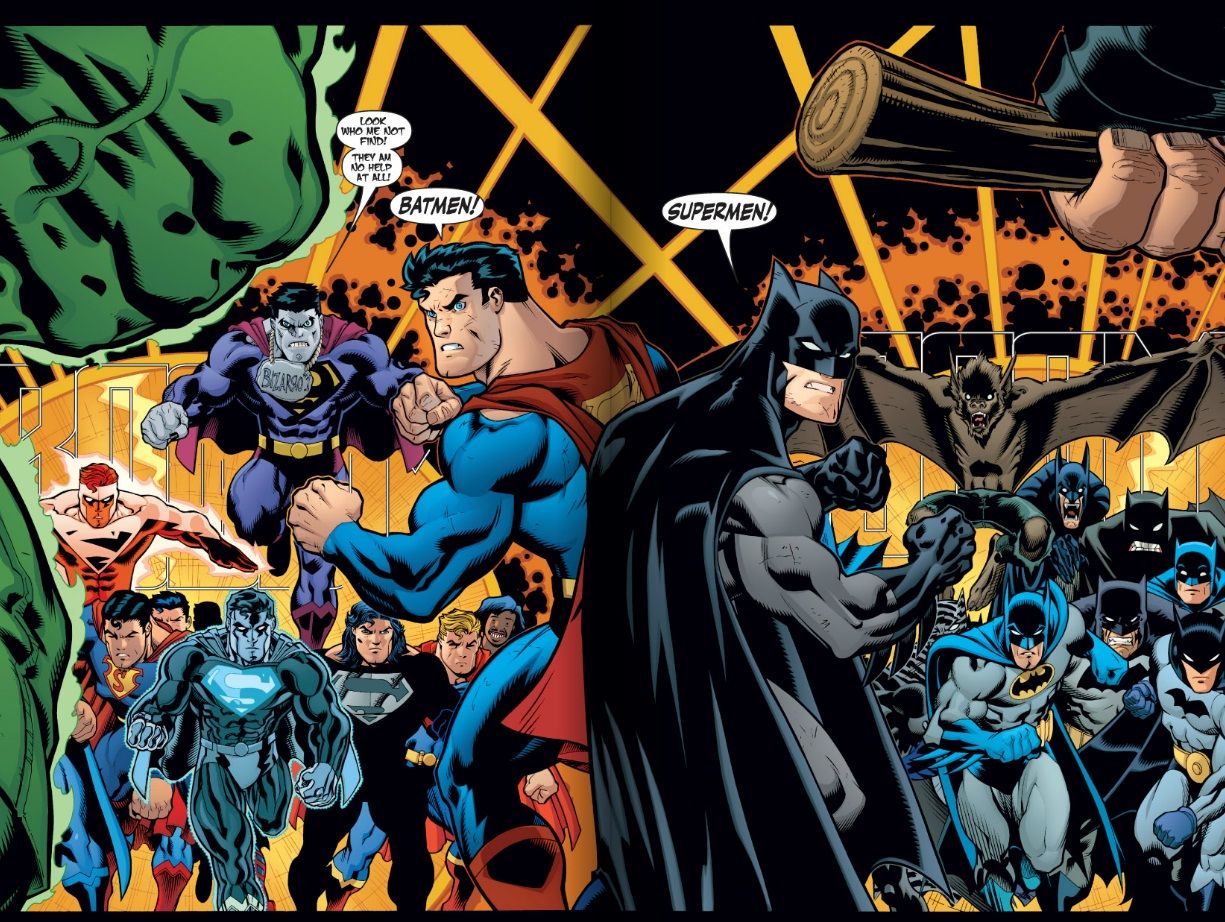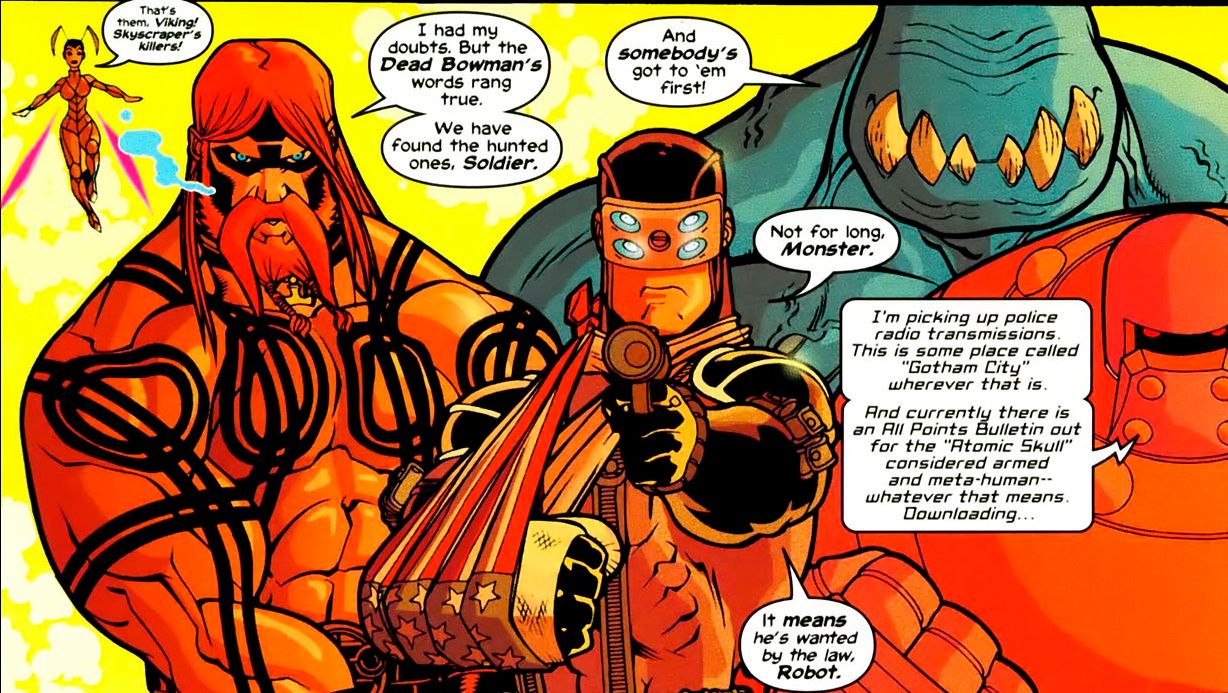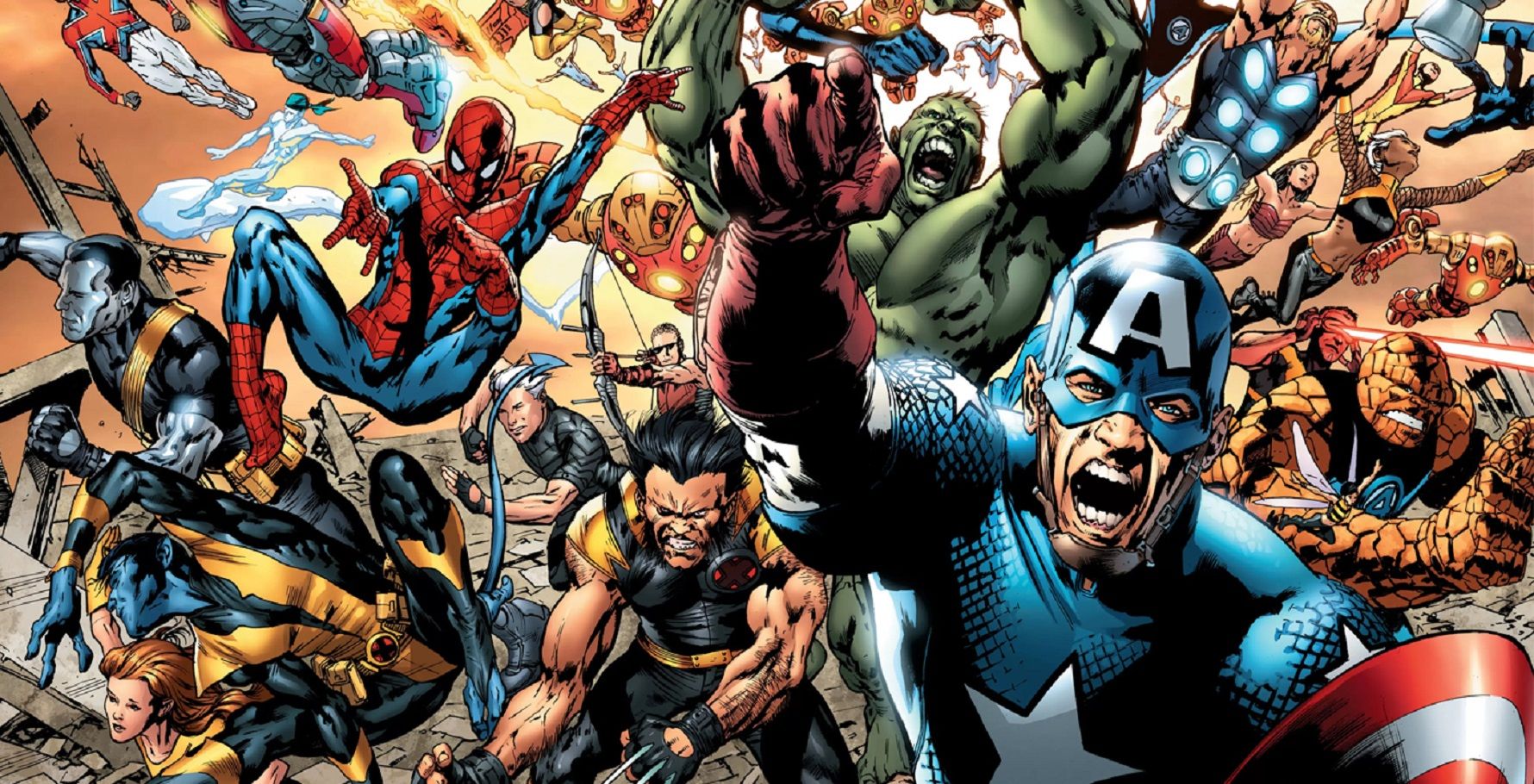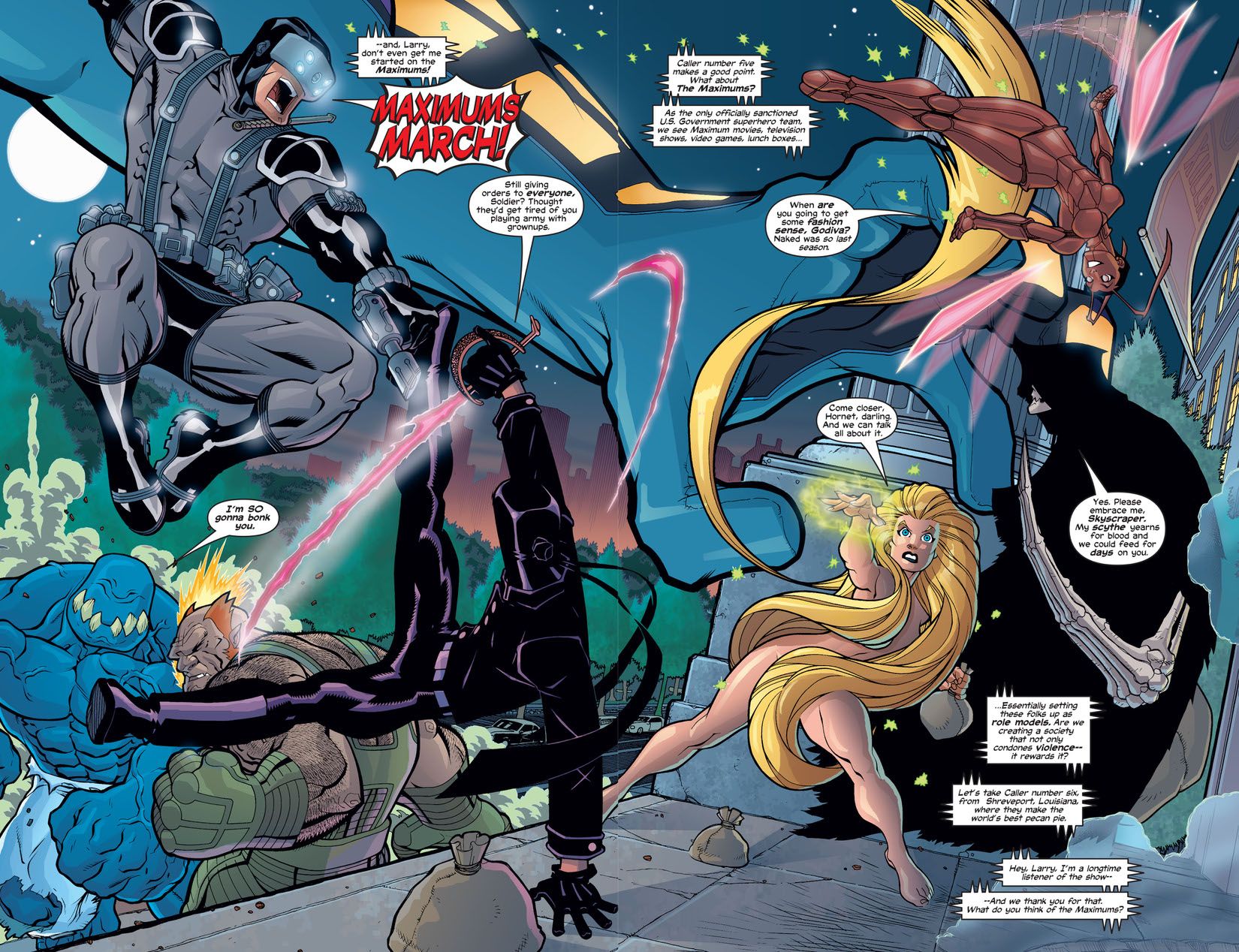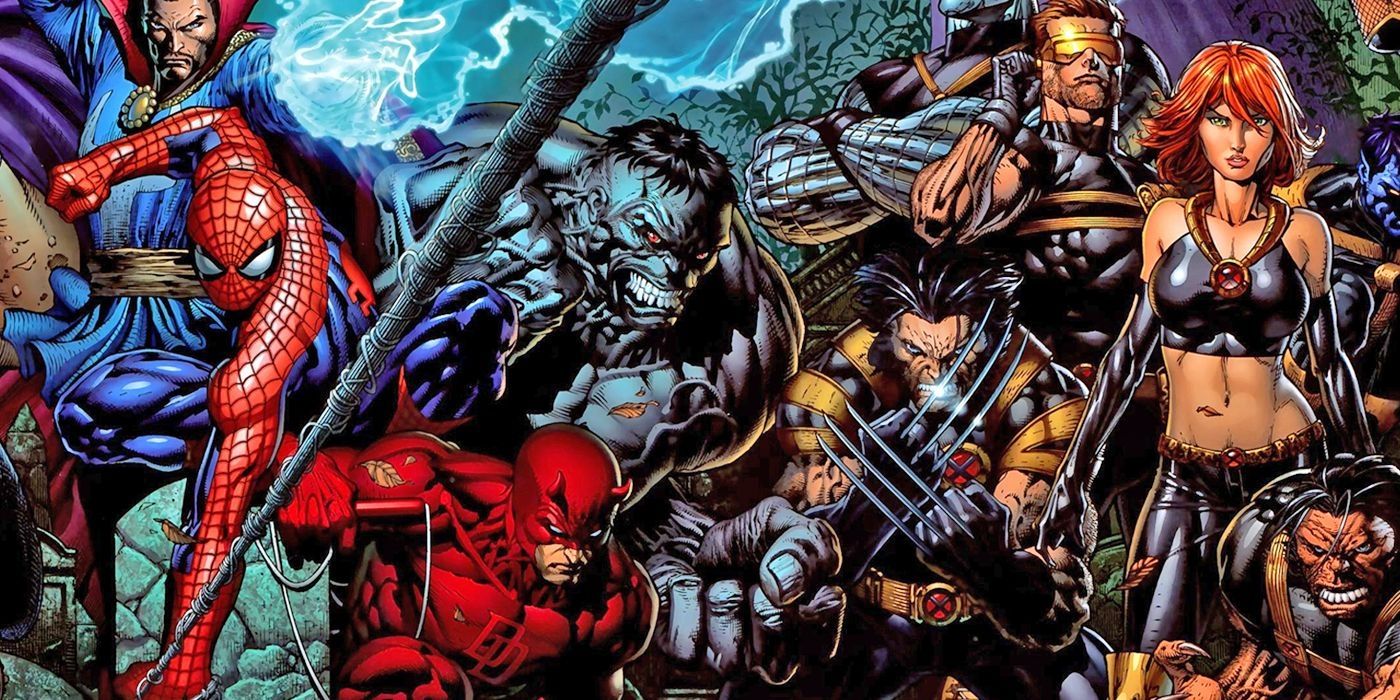Following years of declining sales, the early 2000s marked a period of Marvel and DC aggressively courting readers with big-name creative teams and high-profile projects. One of these titles was Superman/Batman, which paired writer Jeph Loeb with artist Ed McGuiness on a book starring DC's two most popular characters. The premise might have initially seemed like a high-concept miniseries pitch -- the two characters have wildly different power sets and hadn't starred in a monthly series together since World's Finest ended in the early 1980s -- but DC was dedicated to doing the book as a regular title.
Superman/Batman became the hit DC expected, joining a recently revitalized Batman -- featuring stories from Loeb and art from Jim Lee-- as a top-selling title that signaled DC was now serious about challenging Marvel's status as the industry's leader. The stories moved quickly, utilized every guest star and fan-favorite villain imaginable, and always found some excuse for McGuiness to show off his unique take on DC's characters.
McGuiness' art somehow managed to channel the energy of Jack Kirby, the inventiveness of manga, and the stylishness of the era's street art. Superman/Batman was very possibly the best-looking superhero comic on the stands in its day.
Loeb and McGuiness entered June 2005's Superman/Batman #20 with the knowledge it would be their last arc, and as Loeb has described it, an excuse to have fun on their way out. The issue introduces a new team for the heroes to fight, the Maximums. This alternate reality superhero team witnessed a reality-deviated version of Superman and Batman kill their member Skyscraper weeks earlier, and have now sworn revenge.
Their roster consists of: Soldier, a stern "super-soldier" who still mourns the loss of his son, Lucky; Viking, the axe-wilding powerhouse son of Ice-Giants; Robot, a living machine who presents the façade of a man wearing a hi-tech armored suit; Monster, a rampaging simple-minded beast who, shockingly, transforms into a timid girl named Becky; Hornet, the widow of the gigantic Skyscraper, who flies, shrinks to insect size, and shoots energy blasts. Another recently deceased member is Bowman, the team's hot-tempered archer. He apparently communicates to the Maximums as a ghost.
It's unlikely anyone reading this today doesn't get the joke -- these are clearly parody versions of Marvel's Avengers characters. And given that Marvel has its own parody/homage/knockoff of DC's Justice League in the Squadron Supreme, it's all fair game. But some might not realize that the Maximums are poking fun at a specific era in Marvel's history, its 2000s attempt to revive interest in its properties with the Ultimate Marvel line.
Ultimate Marvel was a Marvel imprint featuring reimagined and modernized versions of the company's superhero characters, now aimed at a 2000s audience. The Ultimates #1 launched in March 2002, a reimagined origin for the Avengers, created by writer Mark Millar and artist Bryan Hitch. The series played on the War on Terror, featuring far rougher versions of the traditional Avengers characters. That era's Avengers writer Kurt Busiek has stated he asked Marvel not to call the book "Ultimate Avengers," since this would carry the connotation Ultimates was "the cool new thing" and an "improvement on that old uncool existing book."
The Ultimates featured a xenophobic Captain America, a cannibalistic Hulk, and an ax-wielding Thor who was likely mentally ill, claiming Asgardian heritage. Like the rest of the Ultimates line, the text was written in mixed-case, at the bequest of Marvel's president Bill Jemas, who claimed comics should be mixed-case.
More context of the times establishes that the Ultimates comic was specifically created to duplicate the success of The Authority, a series both Millar and Hitch had worked on separately in the past. The Authority was a mean-spirited take on superheroes that became an instant hit and critical darling, helping to keep the Wildstorm line alive during a period of anemic comics sales. Anyone paying attention knew that The Ultimates was an effort to lure The Authority's audience over to Marvel. Meanwhile at DC, the Authority inspired their own parody team, a repudiation of the title's grim outlook called the Elite.
The Elite were a team of vigilantes who indulged in brutally violent tactics, believing that the ends justify their means. Created by writer Joe Kelly and artist Doug Mahnke, they first appeared in 2001's Action Comics #775. The story, "What's So Funny About Truth, Justice, & the American Way?," is viewed by some as a necessary rebuttal to the era's new attitude towards heroism.
The cynical, not overly heroic, Maximums parallel the Ultimates to a comical degree. They even speak in mixed-case lettering, and their Thor analogue carries an axe instead of a hammer. Loeb has stated the arc was intended as "good fun" and didn't offend anyone he knew at Marvel. By the time of the Maximums arc, influence from the Ultimate line was bleeding into the mainstream Marvel Universe, with Ultimate Spider-Man scribe Brian Michael Bendis becoming the company's top writer. Introducing the recently murdered Bowman is a reference to Hawkeye's controversial death scene from Avengers #502, the climax of Bendis' first arc on the title.
Other Marvel influences appear later in the Superman/Batman arc. Additional Maximums introduced include Wolverine clone Wolfen (who has "intelligence, with an attitude") and a wisecracking, four-armed teenage hero named Bug. We meet Bug as his Green Goblin-inspired arch-nemesis Halloween is throwing his girlfriend Kristen off the Golden Gate Bridge. Loeb somehow manages to reference the "extra arms" arc from Amazing Spider-Man #100, the death of Gwen Stacy, and the Raimi Spider-Man films in under two pages.
While DC and Marvel were going head-to-head in the era's sales charts, the comics seemed to reflect a mostly friendly rivalry at the time. J. Michael Straczynski would occasionally take shots during his Amazing Spider-Man run, causing some minor online stirs. DC's feelings must not have been hurt so badly, as they later hired Straczynski away from Marvel in an effort to revive Superman sales.
Jeph Loeb would also find himself working at the rival he'd been poking fun of in the early 2000s. Interestingly, the major assignment Marvel gave Loeb was to reignite interest in the same Ultimate line the Maximums were created to mock. The results were… not particularly popular.
Joined by artist Joe Madureira, Loeb penned The Ultimates 3, a sequel to the first two Ultimates series from Mark Millar and Bryan Hitch. The plot involved Ultron leaking a sex tape of Tony Stark and the Black Widow to the Internet, and explicit references to Scarlet Witch and Quicksilver as an incestuous couple, followed by their deaths in two separate scenes. Fans complained the series relied too heavily on shock value. They weren't quite ready for Loeb's follow-up, the line-wide "Ultimatum" event.
The five-issue Ultimatum miniseries anchored the event, pairing Loeb with artist David Finch. The plot dramatized Magneto's efforts to destroy the world, following the deaths of his children in The Ultimates 3. Like so many other comics universes looking to regain some heat, the Ultimate universe experienced worldwide catastrophes and millions of deaths. The story's aim was to draw the existing Ultimate Universe to a close, clearing the board for a fresh start for the line.
In practice, the story is chiefly remembered for page after page of graphic deaths of popular characters, such as the Blob literally eating the Wasp's body, and Hank Pym responding by growing giant-sized and consuming Blob's head.
Critical reaction was viscerally negative and the miniseries lost almost a quarter of its sales by its final issue. You'd almost think Marvel had hired someone to oversee the Ultimate Universe who didn't actually like it that much.
Loeb once mentioned DC was interested in creating a Maximums comic, which as Loeb points out, isn't that outrageous, given that the Elite ended up headlining their own series. Not only did the Maximums comic never materialize, but the characters didn't make any return appearances after their Superman/Batman arc. Maybe DC decided the joke had played itself out, perhaps they were skittish about provoking Marvel even further, or maybe interest in the characters simply waned. But considering what happened to their inspirations, the Maximums may have gotten off easy.
0 Links

